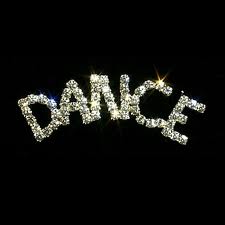Dance
Hip hop developed from several cultures, including jazz, rock, tap and American and Latino cultures. Hip hop is a very energetic form of dancing. It is unique in that it allows its dancers to perform with freedom of movement, adding in their own personalities.[/The hip hop culture is influenced by the following four elements:
- Disc jockeys
- Graffiti (art)
- MCs (rappers)
- B-boys and B-girls (breaker boys and girls)
 The term "Jazz" was first applied to a style of music and dance during WWI.[1] Jazz in a dance form, however, originates from the vernacular dances of Africans when they were brought to the Americas on slave ships.[2] This dance form developed alongside jazz music in New Orleans in the early 1900s.[3] Beginning in the 1930s and continuing through the 1960s, Jazz dance transformed from this vernacular form into a theatre-based performance form of dance that required a highly trained dancer.[4][5] During this time, choreographers from the modern and ballet dance worlds experimented with the jazz dance style.[4] This includes choreographers like George Balanchine, Agnes de Mille, Jack Cole, Hanya Holm, Helen Tamiris, Michael Kidd, Jerome Robbins, and Bob Fosse.[4] All of these choreographers influenced jazz by requiring highly trained dancers to perform a specific set of movements, which differed greatly from the colloquial form of New Orleans in the 1900s.[3][4] Also during this time period (circa. 1950) jazz dance was profoundly influenced by Caribbean and other Latin American dance styles which were introduced by anthropologist and dancer Katherine Dunham
The term "Jazz" was first applied to a style of music and dance during WWI.[1] Jazz in a dance form, however, originates from the vernacular dances of Africans when they were brought to the Americas on slave ships.[2] This dance form developed alongside jazz music in New Orleans in the early 1900s.[3] Beginning in the 1930s and continuing through the 1960s, Jazz dance transformed from this vernacular form into a theatre-based performance form of dance that required a highly trained dancer.[4][5] During this time, choreographers from the modern and ballet dance worlds experimented with the jazz dance style.[4] This includes choreographers like George Balanchine, Agnes de Mille, Jack Cole, Hanya Holm, Helen Tamiris, Michael Kidd, Jerome Robbins, and Bob Fosse.[4] All of these choreographers influenced jazz by requiring highly trained dancers to perform a specific set of movements, which differed greatly from the colloquial form of New Orleans in the 1900s.[3][4] Also during this time period (circa. 1950) jazz dance was profoundly influenced by Caribbean and other Latin American dance styles which were introduced by anthropologist and dancer Katherine Dunham
Dance is a type of art that generally involves movement of the body, usually rhythmic and to music,[1] performed in many different cultures and used as a form of expression, social interaction and exercise or presented in a spiritual or performance setting. Dance may also be regarded as a form of nonverbal communication between humans, and is also performed by other animals (bee dance, patterns of behaviour such as a mating dance). Gymnastics, figure skating and synchronized swimming are sports that incorporate dance, while martial arts kata are often compared to dances. Motion in ordinarily inanimate objects may also be described as dances (the leaves danced in the wind). Definitions of what constitutes dance are dependent on social, cultural, aesthetic, artistic and moral constraints and range from functional movement (such as folk dance) to virtuoso techniques such as ballet. Dance can be participatory, social or performed for an audience. It can also be ceremonial, competitive or erotic. Dance movements may be without significance in themselves, such as in ballet or European folk dance, or have a gestural vocabulary/symbolic system as in many Asian dances. Dance can embody or express ideas, emotions or tell a story. Dancing has evolved many styles. Breakdancing and Krumping are related to the hip hop culture. African dance is interpretative. Ballet, Ballroom, Waltz, and Tango are classical styles of dance while Square Dance and the Electric Slide are forms of step dances. Every dance, no matter what style, has something in common. It not only involves flexibility and body movement, but also physics. If the proper physics are not taken into consideration, injuries may occur. Choreography is the art of creating dances. The person who creates (i.e., choreographs) a dance is known as the choreographer.
